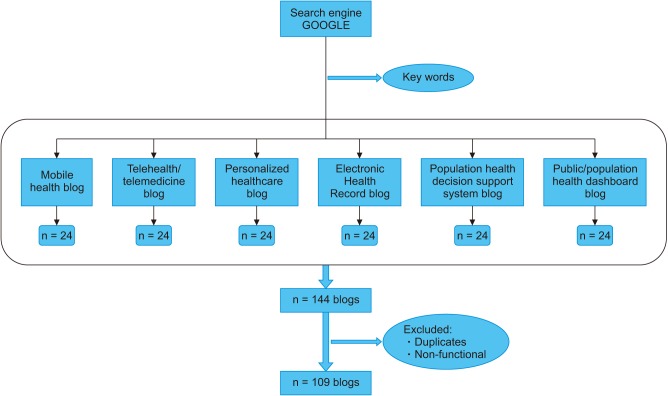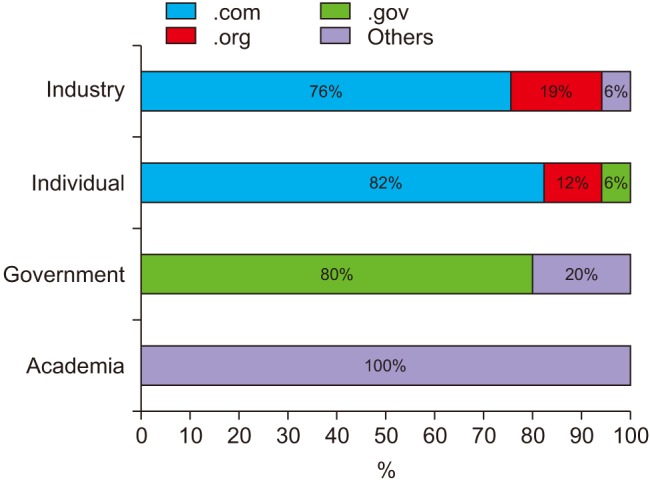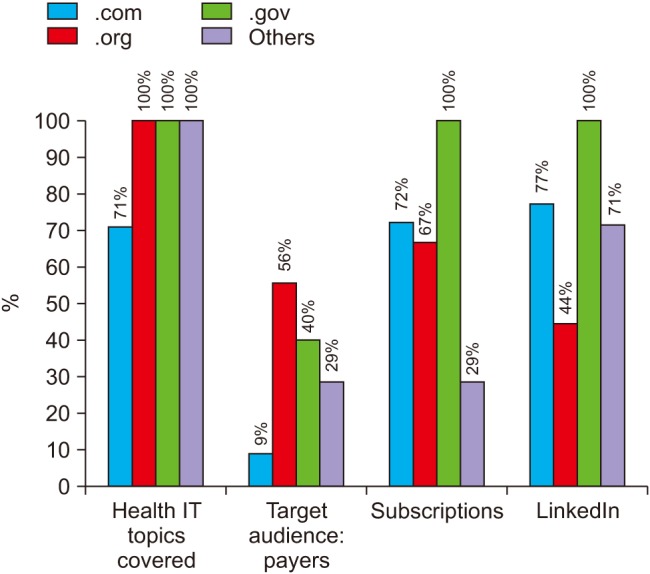I. Introduction
Internet-based digital communication platforms are revolutionizing health seeking behaviors, connecting individuals with health experts and facilitating global dissemination of health information in the 21st century. The use of information technology and communication tools in healthcare delivery have tremendously increased in the present decade especially with the advent of social media. These innovations have fostered data-driven decisions by policy makers, contributed to knowledge generation on patient perspectives and enhanced communication channels through improved access to health services [
1]. The Internet has become a critical medium for health information exchange among physicians, public health professionals, and laypeople. While health professionals largely contribute to online health information, a growing amount of health information on the Internet originates from individual patients sharing their experiences [
2]. Of the 84% of adult internet users in the United States, 61% seek health information online, and 60% consume social media of which 29% have contributed content [
3]. Sixty percent of these online health consumers reported that online health information influenced their treatment choices, while 56% reported that it transformed their approach in maintaining their health [
2].
Internet forums including blogs, chat rooms and other social media now serve as platforms through which information on diseases, outbreaks, and scientific advances are disseminated by key stakeholders in both government and private sectors [
4]. Online discussion groups increasingly offer a novel opportunity for individuals to communicate about health issues. The anonymity features of various social media platforms further enhance this communication by providing a safe space for individuals to freely share their health experiences and perceptions while getting feedback similar users, without fear of judgment [
5]. This in turn provides a vital tool for healthcare practitioners to leverage in monitoring and understanding health care needs of the public beyond the confines of a clinic, creating better opportunities to tackle patient-physician gaps [
5]. Collectively, these internet-based platforms are fostering an innovative view of global health that is fundamentally different from traditional methods of reporting public health findings, and hold greater potential for improving population health [
4].
Blogs are one of the rapidly growing online health communication tools in the 21st century. It is estimated that there are more than 70 million blogs, with an average of 120,000 new blogs being created each day [
6]. Statistics show that on average 38 million Americans engage in active blogging and 76 million are blog readers [
7]. The increasing consumption of blogs, especially those in the healthcare sector, has been attributed to the belief that they are written by credible stakeholders, and the ability of such blogs to serve as a medium for conveying critical information to and from policy makers [
8]. The term ‘blog’ was coined in the 1990s and recently gained prominence as a health communication tool in the present decade. A blog refers to a website containing dated entries known as posts, which are usually organized in reverse-chronological order. Blog features commonly include archived postings, comments section, multimedia plug-ins, trackback mechanisms (notifications from previous blogs) and blogrolls (a list of recommended blogs) [
8]. Blogs are invaluable in healthcare communication. Healthcare blogs have shown tremendous impact on psychological health by providing patient support through online networks, promoting patient health education, improving health literacy, and enhancing self-efficacy in disease management among youth and young adults [
9]. A systematic review of social media use in chronic disease management showed that 85% of studies which reported significant improvement in patient care utilized blogs as a tool for chronic disease management [
10]. This indicates the critical implications of designing blogging tools that can adequately support the health needs of a growing user population.
Stakeholders in the healthcare sector are increasingly recognizing the popularity of digital communities, the crucial role of social media in data gathering, mining, and reporting, and the advances in evidence-based online health communication [
11]. This is exemplified in the Healthy People 2020 goals to increase the number of State health departments that report using social marketing in health promotion and disease prevention programs, as well as school of public health offering social marketing programs [
12]. Health communication and informatics are key elements for assuring quality healthcare delivery and promoting public health. This is evident in the increasing rates of online health seeking behaviors and the use of technology platforms in health information dissemination from disease prevention to detection, diagnosis, treatment and management [
11].
Despite the overwhelming impact of technology in healthcare, and big data explosion in the present decade, limited blogs on informatics and health technology innovations exist in this domain. Studies have shown that there is a relatively low volume of social media discussion on informatics topics, and social media discussions fail to reflect expert opinions on informatics resources [
13]. This is further plagued by the lack of quality and trustworthy blog content, since it is difficult to distinguish expert opinions from less credible ones [
13]. This creates an extensive need for evidence-based blogs in the health informatics domain that reflect the increasing utility and success stories of informatics in healthcare, technology innovations in health, and advances in health technology products. Such health technology blogs have the potential to communicate information on the current state of health technology interventions, what works and what does not, challenges and advances health information technology, and expert opinions. They can also provide a forum to facilitate knowledge exchange and discovery among experts in the field. Interestingly, advances in informatics through the novel fields of infodemiology (defined as the science of determinants of information in an electronic medium, specifically the internet, with the goal of informing public health decisions and public policy) and infoveillance (using infodemiology data for surveillance purposes), can also enhance the quality of information on internet forums including blogs. To the best of our knowledge, this is the first study with an objective to describe the features of health informatics blogs on the internet. The findings may provide information to guide the development of evidence-based health informatics blog to enhance population health in the present century.
Go to :

II. Methods
An Internet search was conducted during August, 2016 using search engine, Google, and the following key words: ‘mobile health blogs,’ ‘telehealth/telemedicine blog,’ ‘Electronic Health Record blog,’ ‘personalized health record blog,’ ‘population health decision support system blog,’ and ‘public/population health dashboard blog.’ The specified key words were chosen because they constitute key domains in health informatics. The first 24 blogs resulting from each key word search were recorded, generating a total of 144 blogs. Emphasis on the first set of blogs is based on findings which have shown that the first 20 to 30 website hits are the most reliable when conducting a search over the internet. Duplicate sites and non-functional sites were excluded from our search, allowing analysis of unique sites only. A total of 109 unique blogs were recorded after removing duplicates and non-functional sites (
Figure 1).
 | Figure 1Unique blogs generated across the various key word searches.
|
1. Variable Extraction
Information was recorded on the following variables:
(1) Website extension: The website extensions of the blog sites including: .org, .edu, .com, .gov, and others (.net, .md, .dcoe) were recorded.
(2) Blog type: The blog sites were classified into three categories including: industry, academia, and government, based on their source of origin.
(3) Target audience: Information was recorded on the target audience for which the blog was created including: health professionals, investors, students, patients, and others.
(4) Date (last blog post): Information was gathered on the most recent date (month and year) during which blog articles were updated.
(5) Topics covered: Information was gathered on the key topics covered by the various blogs.
(6) Contributor requests: The blog sites were assessed to identify request for public contribution of blog articles.
(7) Subscriptions: Information on blog subscription requests were gathered
(8) Social media: Information was recorded on the presence of social media handles including Facebook, Twitter, Google Plus, YouTube, Instagram, and LinkedIn, on the blog sites.
2. Statistical Analysis
Descriptive analysis was computed for the various categorical variables and results were recorded as frequencies and percentages. To compare the proportions of the topics covered, target audience and other variables across the various website extensions, stratified analyses were also conducted using Fisher exact tests due to small sample sizes in the contingency tables. Analysis was done using SAS ver. 9.1 (SAS Institute Inc., Cary, NC, USA), and p-values were reported.
Go to :

IV. Discussion
Based on the analysis of a final number of 109 unique blogs, more than half of blogs with .com and .org website extensions` originated from industries and blogs with .gov extension were mostly from the government. Technology companies and industries are increasingly dominating the healthcare market as reflected in their emerging role in health technology device development and communication via internet forums [
14]. These trends peaked sharply following the enactment of the HITECH Act in 2009, as this engendered increased use of electronic health records, creating growing competition in the health technology market. However, our results show that higher institutions and government are lagging behind either in developing healthcare solutions or in their use of blogs as a medium of disseminating them. This is exemplified by findings that only 5% of government blogs with .gov extensions, and 1% of academic blogs with .edu extensions were identified in our study. The dearth of health technology blogs in academia may be attributed to the huge demand in technical, legal requirements and financial resources needed for commercialization of health technology products, which can be readily generated by for-profit organizations.
More than half of the blogs allowed for subscription1, but less than one-third of the blogs specified that they were open to article contributions from public sources. Significant differences were also observed by subscription among the various website extensions. One hundred percent of blogs having .gov extension allowed for subscription, compared to 67% with .org extension and 72% with .com extension. Building blog subscription is a key way to enhance blog traffic and increase the scope of target audience [
15]. The downsides for blogs which do not allow for subscription is that first-time visitors to such sites may be lost due to lack of follow-up strategies, even though their interest may be initially kindled. Our findings indicate a higher preference for subscription among blogs with .gov extensions compared to .com or .org. Conversely, our results reflect that the preference for public contribution of articles to blogs is not as common. Results showed that 40% of blogs with .gov extensions had contributor requests compared to blogs with .com and .org extensions. While public article contribution is seen as a way to gain traction by some blogs, it has been linked to a negative credibility risk among others, especially if the authors do not demonstrate sufficient expertise in the field [
1617].
The blogs reflected a predominance of several cross-cutting topics including: mobile health, telemedicine/telehealth, and health IT. Our findings reflect growing trends in the fields of mobile health, telehealth and Electronic Health Records in contemporary healthcare design and delivery. Mobile health and telehealth are the highest trending domains in the health technology market, and this is consistent with their rankings across blogs in this study. The telehealth market is projected to reach USD 9.35 billion by 2021 from USD 2.78 billion in 2016, at a CAGR of 27.5% in the next 5 years (2016 to 2021), with key stakeholders including healthcare IT providers, insurance companies and healthcare institutions [
18]. Our study also showed that 100% of blogs with .gov extension did not cover topics related to health business. Health business, which supports effective health IT utilization in administrative and financial related functions within healthcare-has gained popularity in the present era. Its relevance has been underscored following the introduction of the Affordable Care Act which has markedly affected modalities for financial payments, reimbursements and care delivery, which underscores the relevance of this topic in health communication [
19].
Healthcare providers including physicians, caregivers, and health educators constituted the most common target audience identified across the blogs. This was followed by: industry/organization, patients/consumers, payers and community/public. Significant differences were observed by target audience across the website extension. Blogs catering to payers (insurance providers) commonly used .org extension, compared to .com or .gov. Blogs having .gov extension did not cater to patients/consumers. Our findings are consistent with the role of healthcare providers, payers and consumers as key players in healthcare decision-making, as well as the growing role of industries. The efforts of industries and technology companies in developing and marketing healthcare applications and devices serve to directly engage patients in management of their own care at the commercial level.
Social media has established an unprecedented means of promoting online information and is increasing used in online platforms especially blogs. This is attributed to their information sharing features which rapidly enhances community network, improves search rankings, boosts traffics, and increases customer reach in the fastest time possible. Ninety-five percent of the blogs in our study had at least one social media handle linked to them. Twitter, Facebook, and LinkedIn were the most common social media handles connected to the blogs. Twitter and LinkedIn were the most common social media present on .gov blogs, compared to Facebook. Significant differences were observed among blogs having LinkedIn social media by website extension. One hundred percent of blogs with .gov extension had LinkedIn compared to blogs with .com and .org. This is in contrast to commercial-oriented platforms where a survey of social media use among marketers showed that more than half of marketers (52%) chose Facebook as their most important platform, followed by LinkedIn (21%), Twitter (12%) and then YouTube (4%) [
20]. Frequency of blog updates have also been shown to impact blog visibility and enhance blog traffic [
2122]. Majority of the blogs articles in our study were last updated in the year 2016. A limitation of this study is the restriction to one search engine in the process of identifying blog sites.
Blogs are fast becoming a widespread tool for dissemination of innovations in health technology, and are attracting a variety of stakeholders within and outside the healthcare domain. There is also an increasing need for lagging areas including academia and government to widely incorporate blog use in disseminating information on health research. The role of blogs as policy informatics tools need to be evaluated in order for stakeholders to collaborate, coordinate and share opportunities and challenges of various public health programs and policies. Further research is needed to examine the use of blogs as channels of communication of best evidence in health informatics research among diverse stakeholders.
Go to :





 PDF
PDF ePub
ePub Citation
Citation Print
Print








 XML Download
XML Download